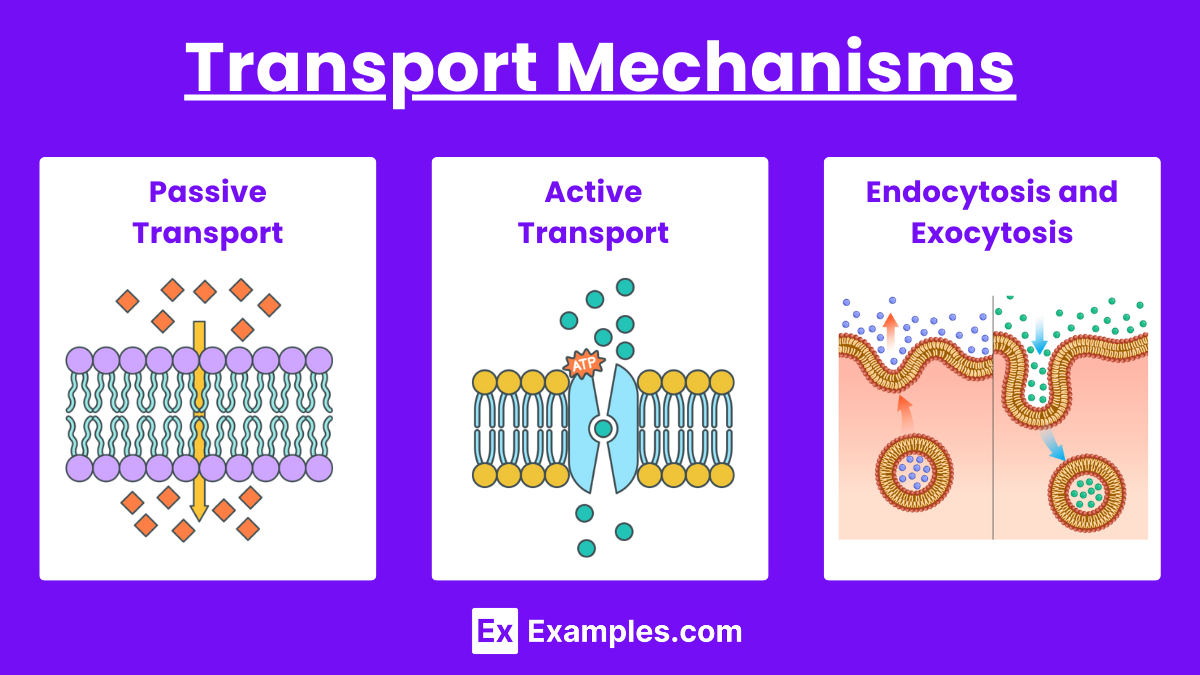In AP Biology, understanding cell regulatory mechanisms like osmosis and selective permeability is crucial. These processes rely on the chemical properties of the cell membrane, such as the phospholipid bilayer and membrane proteins, to regulate substance movement. These mechanisms ensure cellular homeostasis by balancing water and solute concentrations, and controlling nutrient and waste exchange, essential for cell survival and function.
Learning Objectives
Students will understand cell regulatory mechanisms like osmosis and selective permeability, focusing on the chemical properties of the cell membrane that enable these processes. They will learn how osmosis balances water and solute concentrations and how selective permeability controls nutrient and waste exchange. Mastery of these concepts is essential for comprehending cellular homeostasis, transport mechanisms, and overall cell function in AP Biology.
Osmosis

Definition
Osmosis: The passive movement of water molecules across a selectively permeable membrane from a region of lower solute concentration to a region of higher solute concentration.
Mechanism
Water Movement: Driven by the concentration gradient of solutes, water moves through special protein channels called aquaporins in the cell membrane.
Direction: Water moves to balance solute concentrations on both sides of the membrane.
Effects on Cells
Isotonic Solution: Solute concentration is equal inside and outside the cell; no net movement of water; cell remains stable.
Hypotonic Solution: Solute concentration is lower outside the cell; water moves into the cell; cell may swell and burst (lysis).
Hypertonic Solution: Solute concentration is higher outside the cell; water moves out of the cell; cell may shrink (crenation in animal cells, plasmolysis in plant cells).
Biological Importance
Homeostasis: Osmosis helps maintain fluid balance within cells and across tissues.
Turgor Pressure: In plant cells, osmosis helps maintain turgor pressure, which keeps plants upright and supports structural integrity.
Selective Permeability

Definition
Selective Permeability: The ability of the cell membrane to regulate the passage of substances, allowing some molecules to enter or exit while restricting others.
Structure of the Cell Membrane
Phospholipid Bilayer: Composed of hydrophilic heads and hydrophobic tails, creating a semi-permeable barrier.
Membrane Proteins: Include transport proteins, receptor proteins, and enzymes that facilitate selective permeability.
Transport Mechanisms

Passive Transport
Simple Diffusion: Movement of small, nonpolar molecules (e.g., oxygen, carbon dioxide) directly through the lipid bilayer from high to low concentration.
Facilitated Diffusion: Movement of larger or polar molecules (e.g., glucose, ions) through specific transport proteins without energy expenditure.
Channel Proteins: Provide corridors for specific molecules or ions to pass.
Carrier Proteins: Bind to molecules and change shape to shuttle them across the membrane.
Active Transport
Primary Active Transport: Direct use of ATP to transport molecules against their concentration gradient (e.g., sodium-potassium pump).
Secondary Active Transport: Utilizes the energy from the electrochemical gradient created by primary active transport to move other substances against their gradient.
Endocytosis and Exocytosis
Endocytosis: The process by which cells engulf large particles or fluids into vesicles.
Phagocytosis: Engulfing large particles ("cell eating").
Pinocytosis: Engulfing fluids and dissolved substances ("cell drinking").
Receptor-Mediated Endocytosis: Specific uptake of molecules after they bind to receptors on the cell surface.
Exocytosis: The process by which cells expel materials in vesicles that fuse with the cell membrane.
Biological Importance
Homeostasis: Maintains a stable internal environment by controlling the movement of substances.
Nutrient Uptake and Waste Removal: Ensures essential nutrients enter the cell while waste products are expelled.
Signal Transduction: Cell membrane receptors detect and respond to external signals, allowing cells to communicate and adapt to their environment.
Factors Affecting Osmosis and Selective Permeability

Concentration Gradients: The difference in solute concentration across the membrane drives osmosis and diffusion.
Membrane Composition: The presence of specific lipids and proteins affects membrane fluidity and permeability.
Temperature: Higher temperatures increase membrane fluidity and permeability, while lower temperatures decrease them.
Presence of Aquaporins: The number of aquaporin channels influences the rate of osmosis.


